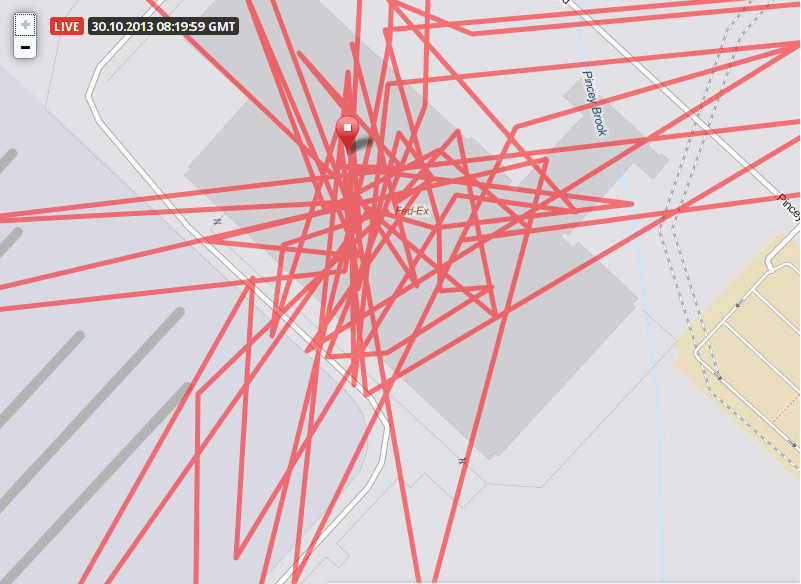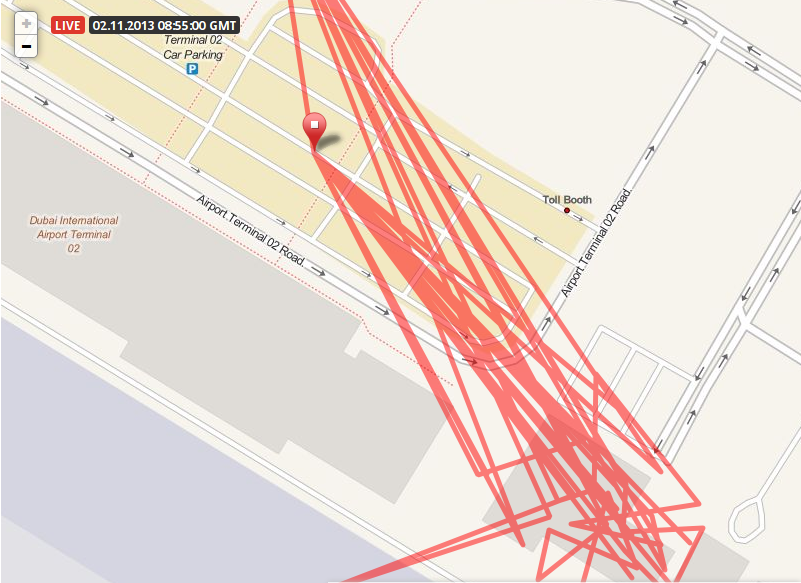Due to the circumstances quickly changing this week’s workshop turned into a radical real time performance. The object in question was a parcel send to Mr. Rajab, see http://rajab.bitnik.org (& http://wikileaks.org/rajab).
This radical real time performance nicely fitted the theme of the fellowship Life vs. Object, with the fourth research cycle “Life versus Object. Comrade Things and Alien Life” focusing on the flattening out of ontological hierarchies between humans, animals, machines and objects and new parametric realities brought about by networked media environments.
The parcel left the Ecuadorian Embassy on Monday the 28th of October with the Twitter status: “Sending Nabeel Rajab a parcel containing a camera. Camera documents its journey through postal system in realtime. http://rajab.bitnik.org/post/1/img/173069.jpg …”
We only received a few images, then the camera went blank, and only black images were transmitted (we speculated that the camera might have been put into a bag). Furthermore we seemed not to move at all, and were stuck in the Parcelforce Depot for over a day.

On Tuesday things moved, and finally the parcel was transported to Stansted Airport, but with not the hoped outcome of being transported out of the country, on the contrary, after another day of waiting the parcel was brought back to the Parcelforce distribution center in Camden.
After still being there for another day !Mediengruppe Bitnik started to inquire into the whereabouts of the parcel and received conflicting status messages from Parcelforce and Fedex. Bitnik tweeted: “Fedex says parcel it’s at Parcelforce – they say it’s at Fedex. Our GPS says: http://goo.gl/maps/jbvPK“.
After this tweet, things suddenly seemed to be moving (if it was because of this tweet or not we shall never know). Wikileaks’ response to this was: “One can imagine the politics as the political hot-potato parcel is thrown between Royal Mail, Parcel Force, Fedex and UK Customs. No one wants to be left holding the parcel if a story breaks about refusing to let it through to Bahrain’s top political prisoner.”
The Parcel left the country on Thursday night, the 31st of October, on a flight to Paris. It only stayed at the Paris airport for some hours before being loaded onto a flight to Dubai, where it arrived on Friday morning.
Another day passed…

Unfortunately we lost the connection to the parcel on the 2nd of November around 9AM (GMT) for good. FedEx changed the status of them tracking the parcel to N/A, and !Mediengruppe Bitnik tweeted: “24’010 live images | 23’626 black images | 5594 km | 6 days | 6573 GPS readings | 3 countries | 3 airports | #postdrone” & “#Postdrone from Assange to Nabeel Rajab was stopped at Dubai Airport. But our journey to Bahrain is not over yet. Stay tuned for updates.”






